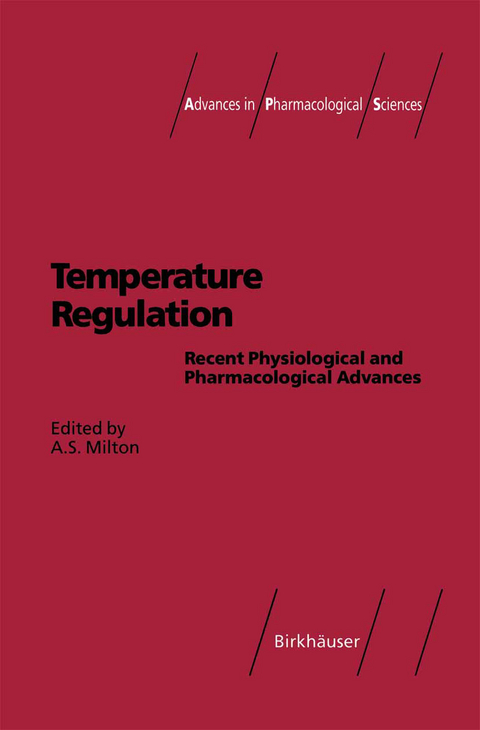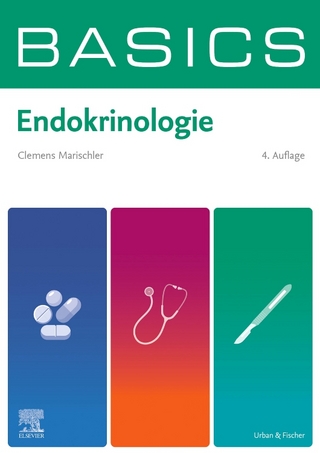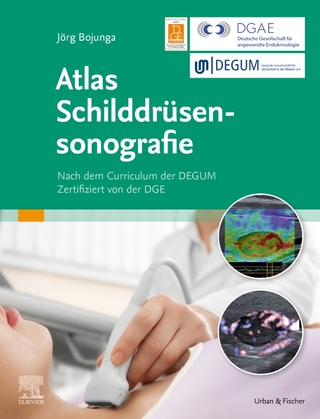
Temperature Regulation
Springer Basel (Verlag)
978-3-0348-9646-7 (ISBN)
Effect of peripheral corticotrophin-releasing factors on febrile responses.- Fever induction by a cytokine network in guinea pigs: The roles of tumour necrosis factor and interleukin-6.- Cytokines in endotoxin tolerance.- Effects of immunomodulators and protease inhibitors on fever.- Endogenous steroids limit the magnitude of febrile responses.- The role of heat shock proteins (HSPs) and interleukin-1 interaction in suppression of fever.- Body temperature elevation per se induces the late phase syndrome.- The absence of fever in rat malaria is associated with increased turnover of 5-hydroxytryptamine in the brain.- Prostaglandins and the acute phase immune response.- Pryogenic immunomodulator stimulation of a novel thymic corticotrophin releasing factor in vitro.- Apparent dissociation between lipopolysaccharide-induced intrapreoptic release of prostaglandin E2 and fever in guinea pigs.- Thermoregulatory responses of rabbits to combined heat exposure, pyrogen and dehydration.- Fever and the Organum vasculosum laminae terminalis: Another look.- Lipopolysaccharide (LPS)-induced fos expression in the brains of febrile rats.- Analysis of body temperature and blood protein in hypothermic syrian hamsters and rats.- Neurophysiology of thermoregulation: Role of hypothalamic neuronal networks.- Effect of 5-HT receptor agonists or antagonists on hypothalamic 5-HT release or colonic temperature in rats.- Temperature sensitivity of rat spinal cord neurons recorded in vitro.- The effect of ambient temperature on the modulation of thermoregulatory mechanisms by selective opioid peptides.- Regulation of body temperature: Involvement of opioid and hypothalamic GABA.- Bilateral difference in tympanic temperatures reflects that in brain temperature.- Temperature interhemispheric brain asymmetry as a sign of functional activity.- Cerebral and related temperatures in normothermic subjects.- Non-thermometric means of assessing changes of brainstem temperature: The question of selective brain cooling in humans.- Effects of selective ?-adrenergic blockade on control of human skin blood flow during exercise.- Acclimation to 3 different climates with the same wet bulb globe temperature.- Sensible heat loss after systemic anticholinergic treatment.- Neuropeptide-Y (NPY) reduces cutaneous microcirculatory blood flow and increases total blood flow in the rat tail.- Effect of pretreatment with delta-9-tetrahydrocannabinol on the ability of certain cannabimimetic agents to induce hypothermia in mice.- Central motor command affects the sweating activity during exercise.- Selective brain cooling in the horse during exercise.- Skin blood flow during severe heat stress: Regional variations and failure to maintain maximal levels.- Heat transfer via the blood.- Fall in body core temperature during the previous heat exposure time in rats after subjection to heat loads at a fixed time daily.- Treatment of immersion hypothermia by forced-air warming.- Factorial effects on contact cooling.- Convective and metabolic heat in human fingers.- From foetus to neonate: Implications for the ontogeny of thermoregulation.- Effects of several factors on the enlargement of brown adipose tissue.- Thermal preference behaviour following ß3-agonist stimulation.- Sympathetic tone and noradrenaline responsiveness of brown adipocytes from rats with high levels of sexual steroids.- The tail of the rat in temperature regulation: effect of angiotensin II.- Selective vulnerability of rat hippocampus in heat stress.- Development of temperature regulation in precocial chicks: Patterns inshorebirds and ducks.- Central venous pressure and cardiovascular responses to hyperthermia.- Effects of bright and dim light intensities during daytime upon circadian rhythm of core temperature in man.- Long term heat acclimation: Acquired peripheral cardiovascular adaptations and their stability under multifactorial stressors.- Effects of solar radiation and feed quality on heart rate and heat balance parameters in cattle.- Cytological changes in brown adipose tissue of lean and obese mice: Acclimation to mild cold with and without a warm refuge.- Manipulation of brown adipose tissue development in neonatal and postnatal lambs.- Resting muscle: A source of thermogenesis controlled by vasomodulators.- Thyroid status modulates hypothalamic thermosensitivity, vasopressin and corticosteroid secretion in rabbits.- Role of prolactin in brown adipose tissue thermogenic activity.- Biology of adaptive heat production: Studies on brown adipose tissue.- Brown adipose tissue: Receptors and recruitment.- High-energy food supplement, energy substrate mobilization and heat balance in coldexposed humans.- Emerging themes in thermoregulation and fever.- Author Index.- Keyword Index.
| Erscheint lt. Verlag | 13.10.2012 |
|---|---|
| Reihe/Serie | Advances in Pharmacological Sciences |
| Zusatzinfo | XII, 376 p. |
| Verlagsort | Basel |
| Sprache | englisch |
| Maße | 155 x 235 mm |
| Gewicht | 599 g |
| Themenwelt | Medizinische Fachgebiete ► Innere Medizin ► Endokrinologie |
| Medizin / Pharmazie ► Medizinische Fachgebiete ► Pharmakologie / Pharmakotherapie | |
| Studium ► 1. Studienabschnitt (Vorklinik) ► Biochemie / Molekularbiologie | |
| Studium ► 1. Studienabschnitt (Vorklinik) ► Physiologie | |
| Studium ► 2. Studienabschnitt (Klinik) ► Pathologie | |
| Naturwissenschaften ► Biologie ► Biochemie | |
| Naturwissenschaften ► Biologie ► Zoologie | |
| Schlagworte | classification • Development • Opioid • Physiology • Polysaccharid • Prolactin • proteins • Steroids • tissue |
| ISBN-10 | 3-0348-9646-8 / 3034896468 |
| ISBN-13 | 978-3-0348-9646-7 / 9783034896467 |
| Zustand | Neuware |
| Haben Sie eine Frage zum Produkt? |
aus dem Bereich


